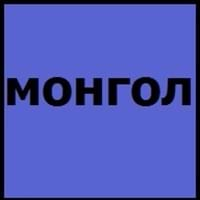Countries
Israel
China, Mongolia
National Language
Israel
China, Mongolia
Second Language
Israel
Not spoken in any of the countries
Speaking Continents
Africa, Asia, Europe
Asia
Minority Language
Poland
Not spoken in any of the countries
Regulated By
Academy of the Hebrew Language
Council for Language and Literature Work, State Language Council (Mongolia)
Interesting Facts
- The original language of Bible is Hebrew.
- The men and women use different verbs in hebrew language.
- Mongolian was first written using Phagspa script in late 13th century.
- There is no connection between Mongolian, Japanese and Korean, but still in terms of grammar and sentence structure they are very similar.
Similar To
Arabic and Aramaic languages
Turkish Language
Derived From
Aramaic Language
Not Available
Alphabets in
Hebrew-Alphabets.jpg#200
Mongolian-Alphabets.jpg#200
Scripts
Hebrew
Mongolian alphabets: Traditional Mongolian script
Writing Direction
Right-To-Left, Horizontal
Not Available
Hello
שלום (Shalom)
Сайн уу (Sain uu)
Thank You
תודה (Toda)
та бүхэнд баярлалаа (ta bükhend bayarlalaa)
How Are You?
מה שלומך? (ma shlomxa)
Юу байна? (Yuu baina?)
Good Night
לילה טוב (Laila tov)
Сайн шөнийн (Sain shöniin)
Good Evening
ערב טוב (Erev tov)
Сайн үдэш (Sain üdesh)
Good Afternoon
אחר צהריים טובים (Achar tzahara'im tovim)
Сайн Үдээс хойш (Sain Üdees khoish)
Good Morning
בוקר טוב (Boker tov)
Өглөөний мэнд (Öglöönii mend)
Please
בבקשה (bevekshah)
Хэрэв (Kherev)
Sorry
סליחה! (Slicha)
Уучлаарай (Uuchlaarai)
Bye
להתראות (Lehitraot)
Баяртай (Bayartai)
I Love You
אני אוהבת אותך (Ani ohevet otcha)
Би чамд хайртай (Bi chamd khairtai)
Excuse Me
בבקשה!
Өршөөгөөрэй (Örshöögöörei)
Dialect 1
Ashkenazi Hebrew
Khalkha Mongolian
Where They Speak
Israel
Mongolia
Dialect 2
Samaritan Hebrew
Ordos Mongolian
Where They Speak
Israel, Palestine
Mongolia
How Many People Speak
Not Available
Dialect 3
Yemenite Hebrew
Khorchin Mongolian
Where They Speak
Israel
Mongolia
Speaking Population
Not Available
Not Available
Second Language Speakers
Not Available
Native Name
עברית / עִבְרִית (ivrit)
монгол (mongol) монгол хэл (mongol hêl)
Alternative Names
Israeli, Ivrit
Not Available
French Name
hébreu
mongol
German Name
Hebräisch
Mongolisch
Pronunciation
[(ʔ)ivˈʁit] - [(ʔ)ivˈɾit]
/mɔŋɢɔ̆ɮ xiɮ/
Ethnicity
Not Available
Not Available
Language Family
Afro-Asiatic Family
Mongolic family
Subgroup
Semitic
Mongolian
Branch
Canaanitic
Not Available
Early Forms
Biblical Hebrew, Mishnaic Hebrew, Medieval Hebrew, Hebrew
Middle Mongolian, Classical Mongolian, Mongolian
Standard Forms
Modern Hebrew
Khalkha, Southern Mongolian
Language Position
Not Available
Signed Forms
Signed Hebrew
Mongolian Sign Language
Scope
Individual
Macrolanguage
ISO 639 6
Not Available
Not Available
Glottocode
hebr1246
mong1331
Linguasphere
12-AAB-a
part of 44-BAA-b
Language Type
Living
Living
Language Linguistic Typology
Subject-Verb-Object, Verb-Subject-Object
Subject-Object-Verb
Language Morphological Typology
Fusional, Synthetic
Not Available
Hebrew and Mongolian Greetings
People around the world use different languages to interact with each other. Even if we cannot communicate fluently in any language, it will always be beneficial to know about some of the common greetings or phrases from that language. This is where Hebrew and Mongolian greetings helps you to understand basic phrases in Hebrew and Mongolian language. Hebrew word for "Hello" is שלום (Shalom) or Mongolian word for "Thank You" is та бүхэнд баярлалаа (ta bükhend bayarlalaa). Find more of such common Hebrew Greetings and Mongolian Greetings. These greetings will help you to be more confident when conversing with natives that speak these languages.
Hebrew vs Mongolian Difficulty
The Hebrew vs Mongolian difficulty level basically depends on the number of Hebrew Alphabets and Mongolian Alphabets. Also the number of vowels and consonants in the language plays an important role in deciding the difficulty level of that language. The important points to be considered when we compare Hebrew and Mongolian are the origin, speaking countries, language family, different greetings, speaking population of these languages. Want to know in Hebrew and Mongolian, which language is harder to learn? Time required to learn Hebrew is 44 weeks while to learn Mongolian time required is 44 weeks.





